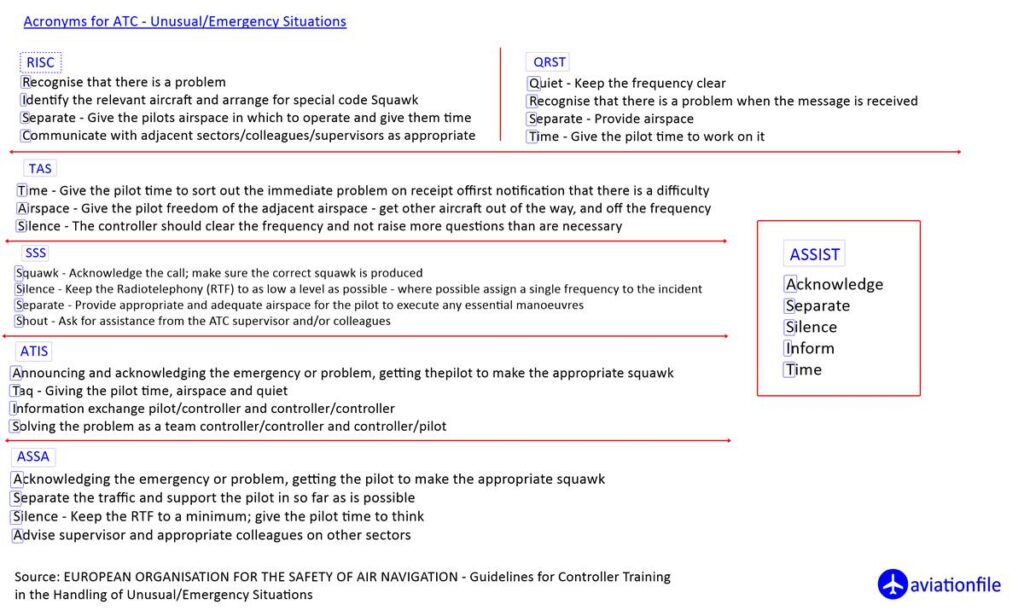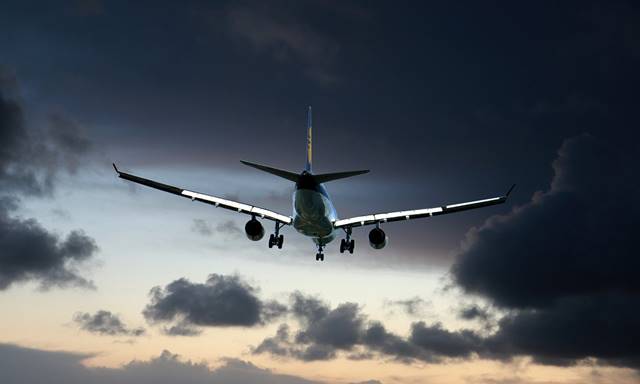ATC under Emergency
In this article, we will explain how air traffic controllers should behave when faced with emergency situations. First of all, we will explain and give examples of some emergency situations that an air traffic controller may encounter. We will talk about what can be experienced during an emergency, what is situational awareness and some of acronyms designed for ATCs. Further on we will briefly indicate how ATC to behave in an emergency.
First of all, unfortunately, emergencies are common situations in aviation. They can occur in air/ground traffic for many reasons. Let’s explain some of them.
Radio failure
Aircraft may experience a technical problem during navigation and may experience radio failure with ATC. This is a highly risky emergency situation especially when we consider the intensity of air traffic during that moment. In the event of a possible radio loss, the plane may perform its landing by applying predetermined procedures without communicating with ATC. An aircraft experiencing radio failure sets 7600 as the transponder code and thus notifies other units.
Unlawful Interference
Aircraft can be hijacked by malicious passengers or for terrorist purposes during their flight. Although it is not encountered very often, it is one of the very risky emergencies in aviation. The pilot of an airplane in this condition may be under difficult conditions (threatened) in the cockpit and may not be able to contact ATC. An aircraft experiencing unlawful interference sets 7500 as transponder code and inform other units in this way.
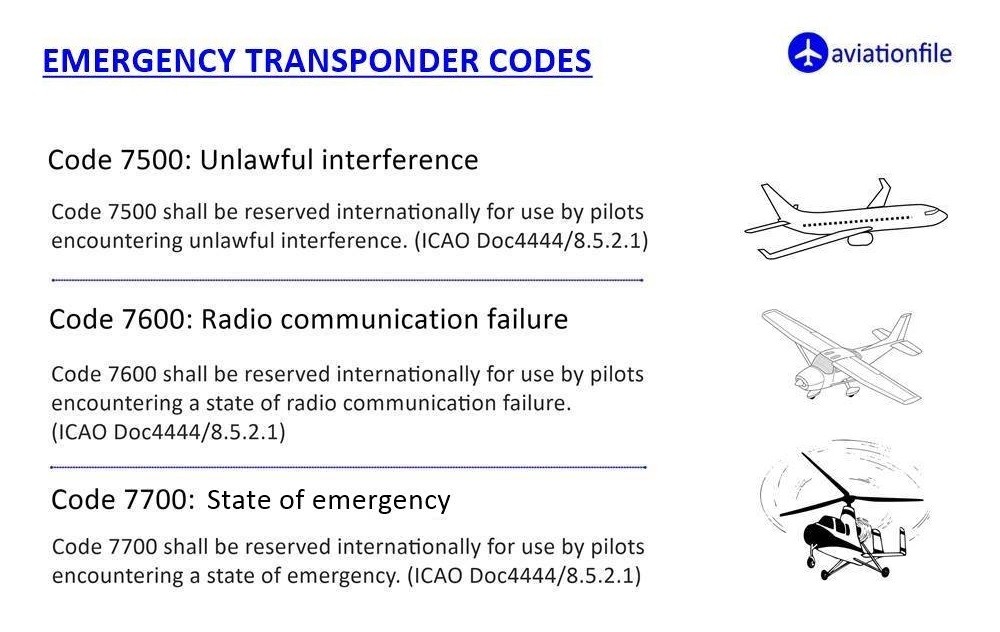
Landing Gear Problems
Some technical problems may cause the aircraft landing gear not be locked/fully extended . In such a case, the aircraft can perform low pass so that the landing gear status can be seen by the aerodrome control unit (tower). Pre-landing, pilots can request fuel dumping in the air to reduce weight and reduce the risk of fire.
Air traffic is arranged according to the probability of the aircraft to stay on the runway. Airport traffic can be stopped. Parked aircrafts on the ground are given status information, the engine is not started, and the taxi is not given (operation can be continued by restrictions at airports with more than one runway). In some cases, the problem in the landing gears cannot be solved and the necessary coordination is made to cover the runway with foam so that the aircraft can land on the fuselage. The emergency is coordinated with all units, especially with the fire department.
Lightning Strike
In the event of a lightning strike, the aircraft may have problems with the electrical system or lose contact with the air traffic control center. Pilots are at risk of temporary blindness, and the aircraft’s navigation systems may be damaged. In this case, the aircraft may have a divert request.
Bird Strike
Bird strikes are one of the major events affecting flight safety and can cause major property damage and, in some cases, loss of life. The size of the bird and where the plane crashes are also important. The majority of collisions occur during the take-off or landing of aircraft. In such cases, aircraft are likely to experience engine failure / loss.
Cabin Pressure Problems / Pressure Problems
Disruption of the pressure balance in the cabin causes oxygen loss and an increase in the unit pressure in the human body. Heat exchange in the cab causes haze and loss of vision. Unstable items in the cabin fly in the air, which may cause injury. In this case, it is possible to experience short-term unconsciousness. The duration of unconsciousness may vary depending on the altitude flown, the extent of the damage and the fuselage of the aircraft. The pilot who encounters a pressure problem at high levels (+14000 feet) may immediately stop the climb and request a descent while climbing. Depending on the flight level, descent can be made with very high ratio.
Bomb Warning
In the event of any bomb notice, the aircraft may stop the climb and request a sudden change in level, or the pilot may request to land at the nearest suitable airport. In this case, air traffic controllers can keep others away from the aircraft with a bomb warning and increase separations. If necessary, the pilot is informed of the aerodrome he wants to land and a safety strip is created around the runway. It is also necessary to confirm whether there is a dangerous substance in the aircraft.
Fuel Problems
It refers to situations in which the amount of fuel in an airplane is too low to allow a safe landing at the end of the planned flight. According to the remaining fuel, the plane must land as quickly as possible. The headwind is higher than expected and may cause more fuel consumption. Technical problems in the pump system can also cause a fuel problem.
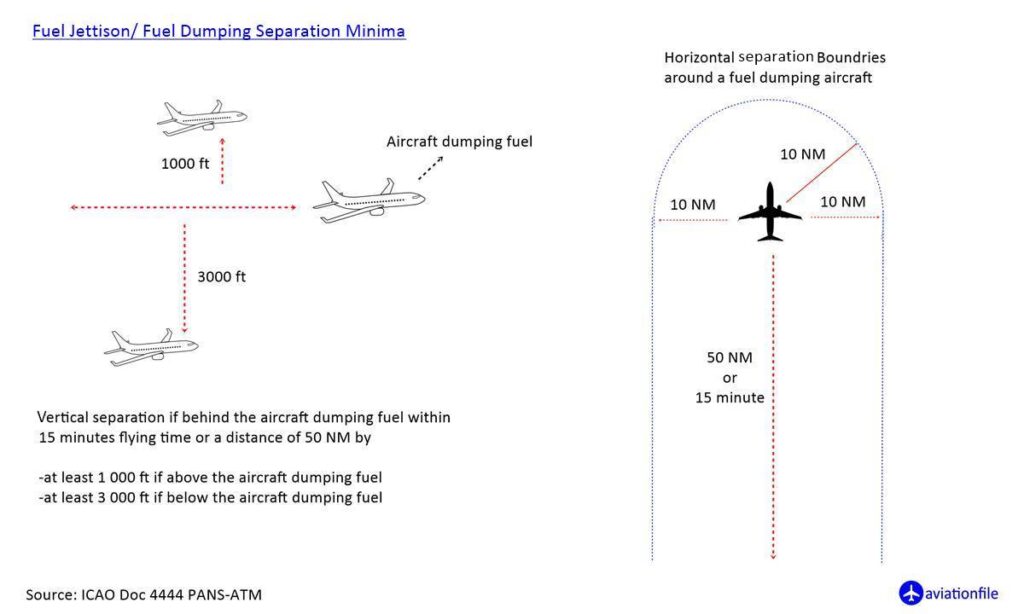
As you see, aircraft can experience emergencies in the air for a variety of reasons. In these emergency situations, the workload of the pilots in the cockpit naturally increases. Stress and pressure increase and it is necessary to make the right decision in a short time.
When ATC, on the other side of the event, encounters such a situation, the pressure and workload on them naturally increases. They must take the necessary measures according to the nature of the emergency. It is of great importance to coordinate with the relevant units and to try to make the safest landing of the aircraft, which is basically an emergency, as well as all these. Let’s imagine both sides of the event in our minds. We will understand that there are processes that are very stressful, intense and under pressure, competing with time.
The pilot who experiences such a situation may have difficulty in establishing the necessary and healthy communication with the air traffic controller. He may not have time to communicate. For this reason, ATC should be aware of this situation in the cockpit and should communicate in the shortest and clearest way without disturbing pilot. In addition ATC should provide the pilots with the possible support.
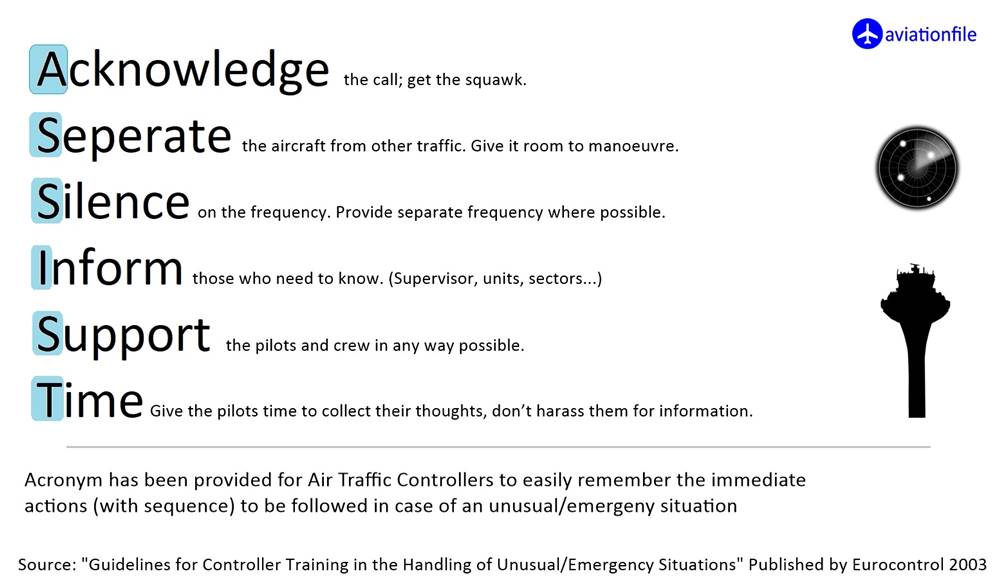
There are many acronyms that can guide ATCs in such emergencies. See figure 1. One of these abbreviations ASSIST, developed under the leadership of Eurocontrol, has been accepted and used especially in European airspace.
